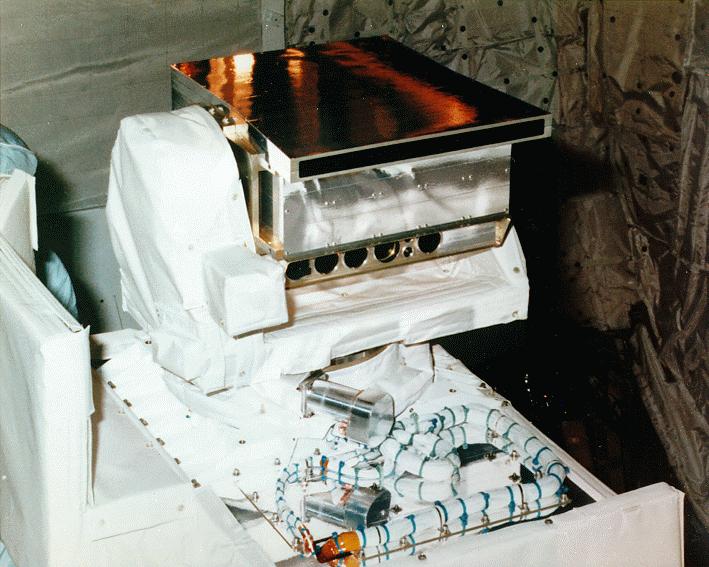
| Spectrograph Wavelength Ranges at present | ||||
|---|---|---|---|---|
| Spectrograph Designation |
Spectrum Number |
Plate Scale [Å/pix] |
Lamda(min) [Å] |
Lamda(max) [Å] |
| A | 1 | 3.178 | 9040 | 10910 |
| B | 2 | 2.857 | 7420 | 9060 |
| 3 | 2.879 | 5940 | 7595 | |
| C | 4 | 1.481 | 5235 | 6090 |
| 5 | 1.486 | 4430 | 5285 | |
| D | 6 | 1.464 | 3795 | 4640 |
| 7 | 1.476 | 2970 | 3820 | |
| E | 8 | 1.818 | 2035 | 3080 |
| 9 | 1.811 | 1150 | 2160 | |
The resolution is determined by the width of the entrance slit. Typically the slits are two pixels wide. The slit image in the image plane is not rectangular but broadened slightly by an event spread function in the image intensifier.
In later flights, we have improved the capability of the experiment by adding star tracking. This allows us to make absolute absorption measurements of the neutral atmosphere by tracking stars into the limb. Stars are used as calibration sources. By selecting a star of the proper type, emission can be recorded simultaneously across the 9 segments of the spectrum, solving the cross-over problem from segment to segment. We have also implemented limb tracking to remove the limit cycle of the shuttle from the data as it was being recorded. When deployed on the ISS the pointing will be referenced to an inertial platform improving the use of these techniques.
The new CCD detectors will have their scan and program electronics integrated onto the back of the CCDs along with an analogue chain. The A/D converter will have a 16-bit range. Communication with the CCD will use TCPIP ethernet protocol.
The question of a bare or intensified CCDs will be addressed as part of the phase A study. The intensified CCD has an advantage when photon-counting sensitivity is required. Reports on new CCDs suggest they are capable of single event sensitivity. That with their higher quantum efficiency may recommend application at the longer wavelengths. With photon counting we can expect a few Rayleighs sensitivity with fast exposures and tenths of Rayleighs with integrated exposures.
The improved CCD readout capabilities will allow us to implement spectrograph A and extend the wavelength to the CCD cutoff near 10900Å. With bare CCDs in channels A and B we should see an improvement in resolution to nearly the 2 pixel width.

This page is maintained by: